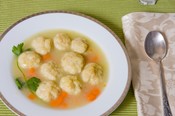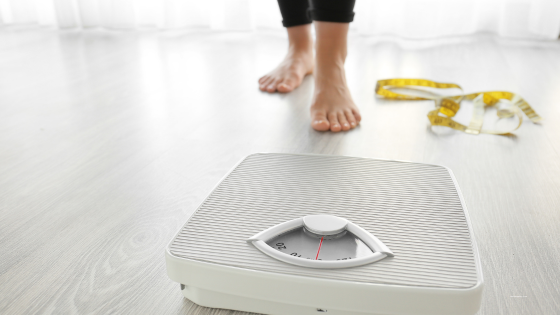Introduction and conclusion by Brad Bloom
 Time to eat. What would life be like if we didn’t have the enjoyment of a good meal to anticipate? Food is such an important part of our physical life that most of us either plan it into our days or at least unconsciously allow for it. Increasingly many people let it control their days, weeks, months and in fact years of their lives. They become slaves to their appetites and prisoners to poor health and obesity.
Time to eat. What would life be like if we didn’t have the enjoyment of a good meal to anticipate? Food is such an important part of our physical life that most of us either plan it into our days or at least unconsciously allow for it. Increasingly many people let it control their days, weeks, months and in fact years of their lives. They become slaves to their appetites and prisoners to poor health and obesity.
Consider for a moment the role faith could play in the meals you eat – those meals you eat three or more times each day “religiously”. In fact – try expanding your view of God. Imagine that this “all knowing God” designed our appetites, perfected our sense of taste and gave us the creativity to transform nutritious natural resources into delectable dishes. What if we are the ones who have trashed a good thing when in reality God has accounted for food in our life journey like a master chef.
Opening yourself up to that kind of perspective could transform meal times into rituals that you savor. If that sounds far fetched then examine your eating traditions. Do you shove food down your throat all week without really thinking about it much? Is your only view of food, in a spiritual context, some brief and occasional religious sacrament – perhaps a quick communion? Hey, when we scarf our way through life it is easy to be flippant with faith.
Use the Easter holiday as an opportunity to shape new eating attitudes. Tap into resources and organize your own personal observance with your friends, family, church or others. Get serious and take time to learn about the traditions of the Passover meal.
 HISTORY OF THE PASSOVER
HISTORY OF THE PASSOVER
Passover (Pesach in Hebrew) is typically celebrated over a seven or eight day period. The Passover celebration among the Jewish people is considered as perhaps the most significant of Jewish holidays. It commemorates the deliverance of the Hebrew nation from their captivity in Egypt and the historical Exodus from Egypt and pharaoh. It was during this time that God’s grace was evident in a mighty way on the nation that He would lead into the “Promised Land”. This crossing over into the Promised Land came after forty years of wandering in the desert, during which time God’s power and grace were abundant also.
The Passover story and the Passover meal (Seder) give credence and reverence to God’s power, grace, and love towards his people during a time of captivity, oppression, suffering and plagues, as well as a time of freedom and deliverance. In addition to the Exodus, the tenth and final plague that God brought upon Egypt prior to the Exodus is especially significant in the recounting of the Passover story. Through this plague all the firstborn of Egypt were killed at the stroke of midnight in the month of Nissan. God however made provision for his people with the mandate to take the blood shed from a sacrificial lamb and to smear it across the door of their dwellings, so that the angel that God sent would “pass over” them and not kill their firstborn. The name Passover is derived from this act of God’s grace.
THE TRADITION OF THE PASSOVER SEDER
The Passover Seder is customarily held at home on the first or second night of Passover. Today many people attend Passover services at a synagogue or church. Many prefer the second night, as all work is to be refrained from on the first and the last days of Passover. Preparing the home for the Passover meal is quite an undertaking if done properly. The preparation may start weeks or even up to months in advance. The main reason for this is that all “chametz” or leaven must be totally eliminated from the house. In addition any utensils, dishware, or any items that have touched chametz must be cleansed in a very specific ceremonious fashion. Complete Passover sets of utensils and dishware that have never touched chametz are often preferred during the Passover Seder. This leaven is representative of sin.
Seders are usually several hours long and include an elaborate and well planned meal. They also include many wonderful stories of the Exodus from Egypt and games for the children. Singing, laughter and joy make for a memorable Passover Seder for all present. Certain members of the family take specific roles in the Seder. The elder male, usually father or grandfather, will be the leader of the service. He will facilitate the Passover Haggadah or “telling” about their freedom from slavery, fulfilling God’s command to “tell your sons”. Grandmother or mother usually light the candles beginning the Passover festival.
The children customarily “open the door for Elijah” and there are also four questions that are asked by the youngest child during the ceremony. Like the prayers, prayed during the service, these questions may be asked in Hebrew but the English translation basically asks these four questions; 1. Why can we only eat matzo tonight when all other nights we can eat bread or matzo? 2. Why tonight must we only eat bitter herbs (maror)? 3. On other nights we do not dip our herbs, why tonight do we dip twice? 4. On other nights we can sit straight while eating, why tonight do we lean? The answers to these questions speak of the enslavement of the Jews by Pharaoh and the hurried exodus. They also speak of the bitterness of that enslavement and the tears of the Jewish slaves, to the freedom they found in their deliverance from Egypt. Typically only wealthy, free people could recline or lean when eating.
 IS THE PASSOVER FEAST HEALTHY?
IS THE PASSOVER FEAST HEALTHY?
The Passover story in Exodus gives details about the food that was eaten. It is important to remember that all the foods Jews were commanded to eat were always healthy. However for the Passover, they were commanded to eat specific meats – sheep or goat. We know that God considered goat and sheep the blood sacrifices of choice. This dates all the way back to the time of Cain and Able. So these meats had spiritual significance. Consider some of the health implications for these meats.
God told them to eat the meat in a hurry. In Exodus 12:11 God tells Moses, “And thus shall ye eat it; with your loins girded, your shoes on your feet, and your staff in your hand; and ye shall eat it in haste…”. Basically God said, “Get dressed, get your shoes on, get your staff ready, hurry up and eat because you’re leaving Egypt after more than four hundred years of slavery. God and your own mother know that eating too fast will make you sick.
So how did this work for the children of Israel? Interestingly enough, goat and sheep meat have a very low fat to protein ratio compared to other meats like beef or even venison. Furthermore, the fat of goats and sheep is normally liquid at room temperature unlike other meats. This allows for easier digestion by the body. You certainly wouldn’t want to run through the desert after having a high fat meal, even if it’s high in good fats. Your body would need to lie down and rest.
Additionally God asked that the meat be completely roasted, not raw. Cooking meats allows them to be more easily broken down by the body. When the good meats are combined with the bitter herbs (horseradish is often used because it is believed to be what was used in the past) you get a digestive system stimulation allowing for a meal that you can eat on the run. Horseradish has been shown to stimulate the digestive organs.
Four cups of wine are used during the Seder and it is common to use red wine signifying blood. Wine has been shown to have healthy heart benefits and red wine is particularly healthy for your heart as the red grape is shown to possess antioxidants, called flavonoids, which reduce the risk of coronary disease by lowering bad cholesterol (LDL), increasing the levels of good cholesterol (HDL), and by reducing blood clotting.
PLAN NOW TO TAKE PART IN THE PASSOVER TRADITION
Good nutrition is a learning process. Learning about food can be an enjoyable adventure in traditions and other cultures. This Easter discover the flavor and significance in your own Passover Seder.
Ready to get started? The following guide is one approach that can help you successfully organize your own traditional Passover Seder.
- Check out the resources listed below. Many more resources are available so allow yourself time to do some good research.
- Identify family, friends or others that can join with you. Share information with them and get them excited to join and participate.
- Schedule the date, time and location for your Passover Seder. Plan your budget, delegate responsibilities and get everyone committed to faithful participation.
- Remember the meal is the culminating event. Schedule time for planning and execution so that everyone can contribute to and enjoy the religious experience that leads to the meal. As you’re enjoying Passover, make it a time of remembrance, reflection and thanksgiving for what God has given you in your body, mind, and spirit. We are freed from the bondage of the world, from the diseases of poor health and the thoughts that entrap us.
- Consider documenting your Passover journey with a journal, photos or even video.
- After your first Passover meal consider inviting others to learn and experience future Passovers and other meals with you. Apply what you have learned and experienced to your regular day-to-day eating habits.
Passover Dinner For Christian Congregations www.christianseder.com
Why Conduct A Christian Passover (includes recipes)
www.biblestudy.org/basicart/new-testament-christian-passover.html
Introduction To A Christian Seder (offers definitions, step-by-step procedures and pictures)
www.crivoice.org/seder.html









